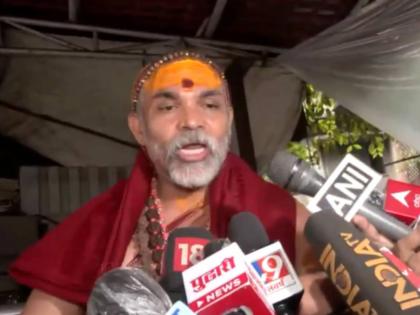
In a stunning development that has sent shockwaves through the religious and broader Indian communities, the Jyotirmath Shankaracharya has alleged that 228 kilograms of gold are missing from the Kedarnath Temple. As one of the most revered and ancient Hindu pilgrimage sites, Kedarnath Temple is not just a place of worship but a symbol of faith, resilience, and spirituality. The allegation of such a significant theft has raised serious questions about the temple’s administration, security, and the overall sanctity of religious treasures in India.
The Allegation
The Jyotirmath Shankaracharya’s claim is not just about the missing gold but also about the potential mismanagement and negligence within the temple’s administrative framework. According to the Shankaracharya, the gold, which was donated by devotees over the years, has mysteriously disappeared, and there has been no satisfactory explanation from the authorities responsible for safeguarding these invaluable assets. The spiritual leader’s statements have ignited a fervent demand for transparency and accountability in the management of temple resources.
Historical Significance of Kedarnath Temple
Kedarnath Temple, located in the Garhwal Himalayan range near the Mandakini River in Uttarakhand, is one of the twelve Jyotirlingas, the holiest Hindu shrines of Shiva. It holds immense historical and religious significance. The temple, believed to have been built by the Pandavas and later revived by Adi Shankaracharya in the 8th century, attracts millions of pilgrims annually. The gold donations made by devotees are considered sacred offerings, intended to honor Lord Shiva and support the temple’s upkeep and charitable activities.
Impact on Devotees and Religious Sentiments
The news of the missing gold has deeply affected the sentiments of millions of devotees who visit Kedarnath each year. For many, their contributions to the temple are acts of faith and devotion, and the thought of their offerings being misappropriated is distressing. This incident has sparked a broader conversation about the transparency and integrity of temple management across India. Devotees are now calling for stricter oversight and more rigorous auditing processes to ensure that their offerings are used appropriately.
Temple Administration’s Response
In the wake of these allegations, the Kedarnath Temple administration has come under intense scrutiny. Temple officials have stated that they are unaware of any missing gold and that they have always followed strict protocols in handling and accounting for donations. They have also expressed their willingness to cooperate with any investigations and audits to clear the temple’s name and restore public trust. The administration is emphasizing its commitment to preserving the temple’s sanctity and ensuring the proper use of all donated resources.
Government and Legal Interventions
Given the gravity of the allegations, there have been calls for the government to intervene. Various religious and political leaders have demanded a thorough investigation by independent agencies to uncover the truth. Some have suggested the involvement of the Central Bureau of Investigation (CBI) to ensure an impartial probe. Legal experts are also weighing in on the matter, pointing out the need for stringent laws to protect religious institutions and their assets.
Broader Implications for Religious Institutions
This incident has highlighted a larger issue regarding the management of wealth and donations in religious institutions across India. Many temples, mosques, churches, and other places of worship receive significant donations from devotees, often in the form of gold, cash, and other valuable items. Ensuring the proper handling and utilization of these donations is crucial to maintaining public trust. There is now a growing call for more transparent and accountable management practices in all religious institutions.
Media and Public Reaction
The media coverage of the alleged theft has been extensive, with news outlets and social media platforms abuzz with discussions and debates. Public opinion is divided, with some expressing skepticism about the allegations and others demanding immediate action. The story has also attracted international attention, with global media highlighting the incident as a significant breach of religious trust and security.
Possible Consequences and Future Steps
If the allegations are proven true, the consequences could be far-reaching. It would not only be a major scandal for the Kedarnath Temple but could also lead to broader reforms in the management of religious institutions in India. Potential steps could include the implementation of more stringent security measures, regular audits by independent bodies, and greater involvement of devotees in the oversight process.
Conclusion
The allegation of 228 kilograms of gold missing from Kedarnath Temple by the Jyotirmath Shankaracharya has stirred a significant controversy. It raises critical questions about the management and security of religious treasures in one of India’s most revered temples. As investigations unfold, it is imperative that transparency and accountability are maintained to restore faith among devotees and ensure the sanctity of religious institutions. This incident serves as a wake-up call for all religious establishments to adopt more robust measures to safeguard their assets and uphold the trust placed in them by millions of followers.
The coming days and weeks will likely see intensified scrutiny and possibly new revelations as authorities delve deeper into these serious allegations. For now, the focus remains on uncovering the truth and ensuring that such an incident does not tarnish the spiritual and cultural heritage that temples like Kedarnath represent.

